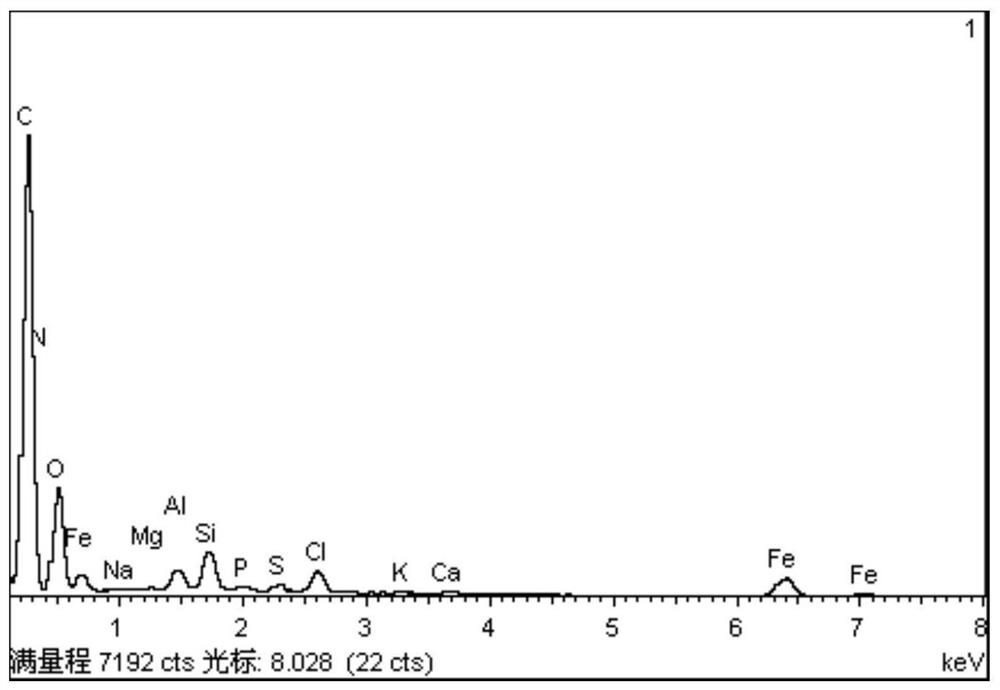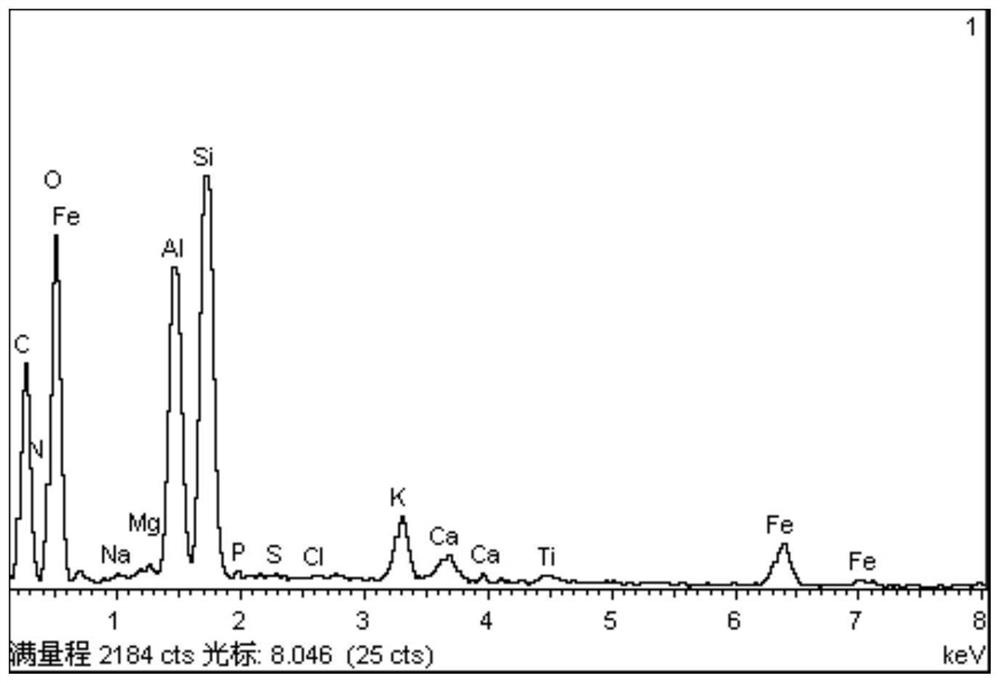Method for preparing biochar from bottom mud and garden waste and application of biochar
A technology of garden waste and biochar, applied in the direction of chemical instruments and methods, biofuels, water pollutants, etc., can solve the problems of reducing water environment maintenance costs, difficult disposal of sediment and garden waste, and reducing the amount of plant fertilization, etc., to achieve Avoiding large-scale occupation of land, realizing resource utilization, and avoiding the effect of eutrophication
- Summary
- Abstract
- Description
- Claims
- Application Information
AI Technical Summary
Problems solved by technology
Method used
Image
Examples
Embodiment 1
[0053] Embodiment 1 A kind of method utilizing bottom mud and garden waste to prepare biochar
[0054] 1. Preparation method
[0055] S1. Clean up and dry the bottom mud and the plant residue produced by Zhu Jin, and crush it to 60 mesh;
[0056] S2. According to the mass ratio of 1:2, take 10g of bottom mud and 20g of plant residues produced by Zhu Jin, add 100mL of water, mix them evenly with a shaker at 25°C and a speed of 60r / min for 3h, and then dry at 105°C dry to obtain mixture A;
[0057] S3. Pyrolyzing the mixture A at 450° C. in an environment with an oxygen concentration lower than 4% for 3 hours to obtain a mixture B;
[0058] S4. With FeCl 3 As a modifier, take the modifier at a mass ratio of 1:10 to the mixture A, and then add 50 mL of water to the mixture B obtained in step S3 and shake it with a shaker at a speed of 60 r / min for 3 h at 25 ° C. After mixing evenly, dry at 105° C. to obtain the biochar.
[0059] 2. Use effect
[0060] Add 0.05g of the prepa...
Embodiment 2
[0063] Embodiment 2 A kind of method utilizing bottom mud and garden waste to prepare biochar
[0064] 1. Preparation method
[0065] With the method of embodiment 1, the difference is that NaOH is used as modifier.
[0066] 2. Use effect
[0067] Add 0.05g of the prepared biochar to 200mL of NH (ammonia nitrogen) wastewater with a concentration of 6mg / L, the adsorption capacity of NH is 9.92mg / g 生物炭 , the removal rate was 41.33%; adding 0.5g of the prepared biochar to 200mL of NH wastewater with a concentration of 80mg / L, the adsorption capacity of NH was 13.72mg / g 生物炭 , and the removal rate was 42.89%.
Embodiment 3
[0068] Embodiment 3 A kind of method that utilizes bottom mud and garden garbage to prepare biochar
[0069] 1. Preparation method
[0070] The method is the same as in Example 1, the difference is that bamboo is used instead of Zhu Jin, and the modifier is taken at a mass ratio of 1:15 to the mixture A, step S2 is dried at 100°C, and step S4 is dried at 110°C Dry.
[0071] Second, the use effect,
[0072] Add 0.05g of the prepared biochar to 200mL of TP wastewater with a concentration of 1mg / L, and the adsorption capacity of TP is 2.15mg / g 生物炭 , the removal rate was 53.78%; adding 0.5g of the prepared biochar to 200mL of TP wastewater with a concentration of 10mg / L, the adsorption capacity of TP was 1.77mg / g 生物炭 , and the removal rate was 44.32%.
PUM
| Property | Measurement | Unit |
|---|---|---|
| adsorption capacity | aaaaa | aaaaa |
| adsorption capacity | aaaaa | aaaaa |
| adsorption capacity | aaaaa | aaaaa |
Abstract
Description
Claims
Application Information
 Login to View More
Login to View More - R&D
- Intellectual Property
- Life Sciences
- Materials
- Tech Scout
- Unparalleled Data Quality
- Higher Quality Content
- 60% Fewer Hallucinations
Browse by: Latest US Patents, China's latest patents, Technical Efficacy Thesaurus, Application Domain, Technology Topic, Popular Technical Reports.
© 2025 PatSnap. All rights reserved.Legal|Privacy policy|Modern Slavery Act Transparency Statement|Sitemap|About US| Contact US: help@patsnap.com


